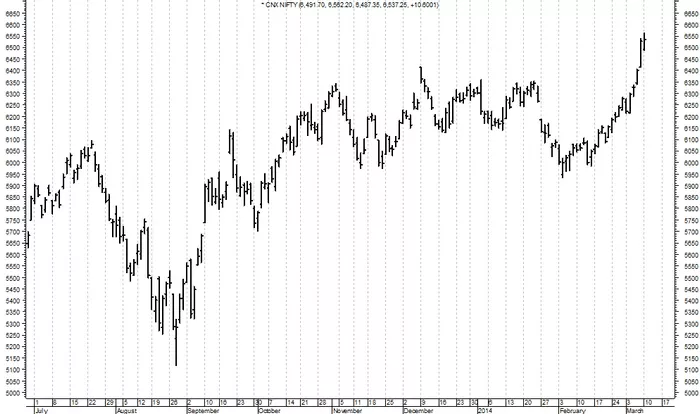In the realm of investing, various types of stocks serve different purposes and exhibit distinct characteristics. Among these, “Swan stocks” represent a unique category that has gained attention for its specific attributes and investment potential. This article provides a detailed exploration of Swan stocks, including their definition, characteristics, benefits, risks, and strategies for investing in them.
Definition of Swan Stocks
“Swan stocks” is a term derived from the concept of “Black Swan” events, which are rare and unpredictable events that have significant consequences. However, Swan stocks are characterized by their stability and reliability, in contrast to the unpredictability associated with Black Swans.
What Are Swan Stocks?
Swan stocks are typically companies with a track record of stability, reliability, and consistent performance. These stocks are often associated with well-established companies that have a proven ability to weather economic downturns and market volatility.
Origin of the Term
The term “Swan stocks” draws inspiration from the Black Swan theory introduced by Nassim Nicholas Taleb. While Black Swans refer to rare, high-impact events that are difficult to predict, Swan stocks are seen as the opposite—representing predictability and stability in the stock market.
Characteristics of Swan Stocks
Swan stocks exhibit several key characteristics that make them appealing to investors seeking stability and long-term growth.
1. Stability and Consistency
Stable Earnings: Swan stocks are known for their stable and predictable earnings. These companies often operate in industries with steady demand and reliable revenue streams.
Consistent Dividend Payments: Many Swan stocks offer consistent dividend payments, providing investors with regular income. The ability to maintain or increase dividends during economic downturns is a hallmark of these stocks.
2. Strong Financial Health
Solid Balance Sheets: Companies with Swan stocks typically have strong balance sheets, characterized by low debt levels, healthy cash reserves, and robust financial metrics.
Positive Cash Flow: Swan stocks often generate positive cash flow, allowing them to reinvest in the business, pay dividends, and withstand economic challenges.
3. Established Market Presence
Industry Leadership: Swan stocks are often associated with industry leaders that have a significant market share and competitive advantage. These companies have established themselves as dominant players in their respective sectors.
Brand Strength: Strong brand recognition and customer loyalty contribute to the stability of Swan stocks. These companies often have a solid reputation and a loyal customer base.
4. Low Volatility
Reduced Price Fluctuations: Swan stocks tend to have lower price volatility compared to more speculative stocks. Their stable earnings and financial health contribute to more stable stock prices.
Less Sensitivity to Market Swings: Due to their stability, Swan stocks are less affected by market fluctuations and economic uncertainties, making them a safer investment choice.
Benefits of Investing in Swan Stocks
Investing in Swan stocks offers several potential benefits, particularly for those seeking stability and long-term growth.
1. Stability and Safety
Reduced Risk: Swan stocks provide a lower-risk investment option due to their stability and consistency. They are less likely to experience dramatic price swings or financial distress.
Predictable Returns: Investors in Swan stocks can often expect more predictable returns, including steady dividend payments and moderate capital appreciation.
2. Consistent Income
Dividend Payments: Many Swan stocks offer reliable and consistent dividend payments, providing investors with a steady income stream. This is especially appealing for income-focused investors.
Reinvestment Opportunities: Dividends from Swan stocks can be reinvested to compound returns over time, contributing to long-term wealth accumulation.
3. Long-Term Growth Potential
Capital Appreciation: While Swan stocks are known for their stability, they also offer potential for capital appreciation over the long term. Their strong market position and financial health support gradual growth.
Compounding Returns: The combination of dividends and capital appreciation can lead to compounded returns, enhancing the overall performance of an investment portfolio.
4. Portfolio Diversification
Diversification Benefits: Swan stocks can add stability to a diversified investment portfolio. Their low volatility and consistent performance provide a counterbalance to more volatile or speculative investments.
Reduced Portfolio Risk: Including Swan stocks in a portfolio can help reduce overall risk and improve risk-adjusted returns.
Risks Associated with Swan Stocks
While Swan stocks offer numerous benefits, they are not without risks. Understanding these risks is essential for making informed investment decisions.
1. Limited Growth Potential
Slow Growth: Swan stocks may experience slower growth compared to more aggressive or speculative investments. Their stability often comes at the cost of rapid expansion.
Market Saturation: Established companies may face challenges related to market saturation or competition, which can limit their growth potential.
2. Dividend Risks
Dividend Cuts: Although Swan stocks are known for consistent dividends, there is still a risk of dividend cuts or suspensions, especially if the company’s financial health deteriorates.
Dividend Yield vs. Total Return: Relying solely on dividend yield for returns may not provide the same level of capital appreciation as more growth-oriented investments.
3. Market Conditions
Economic Cycles: While Swan stocks are generally more stable, they are not immune to economic downturns or market recessions. Economic conditions can impact their performance and financial health.
Interest Rate Sensitivity: Rising interest rates can affect the attractiveness of dividend-paying stocks, including Swan stocks. Higher rates may lead to lower stock prices.
4. Competitive Pressures
Industry Competition: Swan stocks may face competitive pressures within their industry, which can impact their market share and profitability.
Innovation and Disruption: Technological advancements or disruptive innovations can pose challenges to established companies, affecting their stability and growth prospects.
See Also: What Are Small Cap Stocks?
How to Identify Swan Stocks
Identifying Swan stocks involves evaluating various factors to determine a company’s stability, financial health, and market position.
1. Analyze Financial Statements
Revenue and Earnings Stability: Review the company’s revenue and earnings history for stability and consistency. Look for companies with a track record of steady financial performance.
Balance Sheet Strength: Assess the company’s balance sheet for low debt levels, strong cash reserves, and healthy financial ratios. A solid balance sheet indicates financial stability.
2. Evaluate Dividend History
Dividend Consistency: Examine the company’s dividend history for consistency and reliability. Look for companies that have maintained or increased dividends over time.
Dividend Yield: Compare the dividend yield of the stock with industry peers and historical averages. A consistent and competitive dividend yield is a positive indicator.
3. Assess Market Position
Industry Leadership: Evaluate the company’s market position and competitive advantage within its industry. Strong market presence and brand strength contribute to stability.
Customer Loyalty: Consider the company’s customer base and brand loyalty. Established companies with a loyal customer base are more likely to maintain stability.
4. Monitor Valuation Metrics
Price-to-Earnings (P/E) Ratio: Analyze the P/E ratio to assess the stock’s valuation relative to its earnings. Compare the P/E ratio with industry peers and historical averages.
Price-to-Book (P/B) Ratio: Evaluate the P/B ratio to determine the stock’s valuation relative to its book value. This can provide insights into whether the stock is overvalued or undervalued.
Investing Strategies for Swan Stocks
Implementing effective investing strategies can enhance the potential benefits of Swan stocks and mitigate associated risks.
1. Long-Term Investment Horizon
Hold Period: Swan stocks are best suited for long-term investors seeking stability and consistent returns. A long-term investment horizon allows investors to benefit from steady growth and compounding returns.
Patience and Discipline: Be patient and disciplined in your investment approach. Avoid making impulsive decisions based on short-term market fluctuations.
2. Diversification and Allocation
Diversify Investments: Include Swan stocks as part of a diversified investment portfolio. Diversification across different asset classes and sectors can reduce overall risk and enhance returns.
Strategic Allocation: Allocate a portion of your portfolio to Swan stocks based on your risk tolerance, investment goals, and time horizon. Consider a balanced approach to achieve a mix of stability and growth.
3. Regular Monitoring and Rebalancing
Monitor Performance: Regularly review the performance of your Swan stock investments. Stay informed about company developments, market trends, and economic conditions.
Rebalance Portfolio: Periodically rebalance your portfolio to ensure it aligns with your investment objectives and risk tolerance. Adjust allocations as needed based on changes in market conditions or personal goals.
4. Risk Management
Set Stop-Loss Orders: Use stop-loss orders to limit potential losses and manage risk. Determine a price level at which you will sell the stock to prevent further declines.
Stay Informed: Stay informed about the company’s financial health, industry trends, and market conditions. Timely information can help you make informed investment decisions and manage risk effectively.
Conclusion
Swan stocks represent a category of investments characterized by stability, reliability, and consistent performance. These stocks offer potential benefits such as reduced risk, predictable returns, and consistent income, making them appealing to investors seeking stability and long-term growth.
While Swan stocks offer numerous advantages, they are not without risks. Limited growth potential, dividend risks, and market conditions are factors that investors should consider when evaluating Swan stocks. Implementing effective investing strategies, including long-term horizons, diversification, regular monitoring, and risk management, can help maximize the benefits of Swan stocks and achieve investment goals.
Understanding what makes Swan stocks unique and how to evaluate them can enhance your investment strategy and contribute to a well-rounded and resilient investment portfolio.
[inline_related_posts title=”You Might Be Interested In” title_align=”left” style=”list” number=”3″ align=”none” ids=”3492,3442,3406″ by=”categories” orderby=”rand” order=”DESC” hide_thumb=”no” thumb_right=”no” views=”no” date=”yes” grid_columns=”2″ post_type=”” tax=””]






























